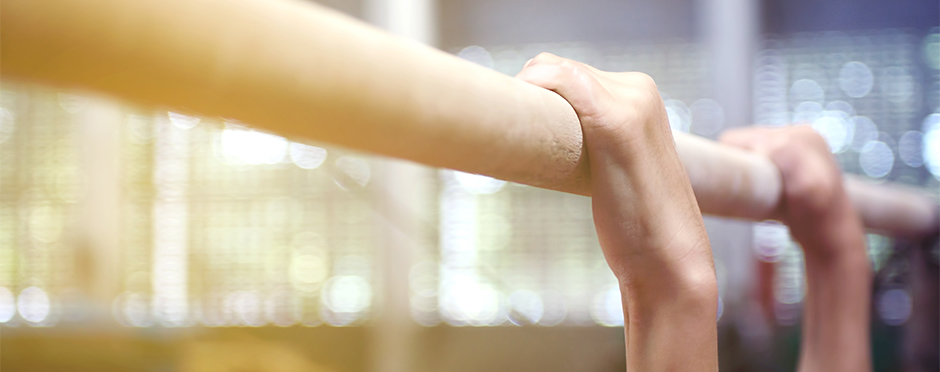
Is A Rip Ruining Your Grip?
Leave a CommentIf you’re a gymnast, you know the pain and inconvenience of sustaining a rip. Rips are a common and painful occurrence in gymnastics, caused by separation of the upper layers of skin in the palm of the hand or around the wrists from the lower layers of skin. Rips can happen from an excessively tight grip, or a callus buildup which causes the skin to bunch as the gymnast swings around the bar. The force of the swing pulls the upper layer of skin away from the lower layers which can lead to a blister or cause it to fill with blood. Rips can also form near the wrist if rubbing occurs against a wrist brace or the gymnast’s grips. Callus formation is also extremely common, and gymnasts most often get calluses on the palms of the hand from repeated friction on the bar. The good news is that rips can be prevented, and the most effective way to do so is by focusing on overall hand and callus care.
Common Causes Of Rips
Friction: Hands are more likely to rip due to friction between the bars and hands if you have sensitive skin or too much callus buildup. A callus is the body’s way of naturally protecting the hands. However, too much callus buildup can become too thick and get caught on the bars. Oppositely, hands that are too soft are more susceptible to ripping.
Dry Skin: Dry skin in general is more likely to crack or rip than healthy skin. Gymnasts use chalk to help with their grip, but chalk is very drying. Gymnasts need to be extra diligent in moisturizing their hands to counteract the use of chalk.
How To Prevent Rips
- Train using appropriate swing techniques
- Regularly replace your grips
- Focus on a daily regimen of hand care
- Wash your hands with soap and water, and use lotion on the front and back of hands and wrists
- Prevent excessive callus buildup by exfoliating. You can use a pumice stone as necessary, which will help prevent any callus from getting too thick. You should also make sure your callus is smooth and does not have any rough edges that could catch on the bar.
- Use tape, pre-wrap, or a wrist sweatband to protect skin from rubbing where your grip is located
How To Treat A Rip
1. Clean The Wound: First, carefully clean the skin with antibacterial soap and water and, if there is a large skin flap, you can carefully cut it off.
2. Apply treatment: We want to protect the area and prevent infection, so you can use an antibiotic cream or ointment to help with this.
3. Let New Layer Of Skin Grow: This is the hardest step and takes the longest. You want the new skin to be able to grow without cracking or ripping again. Tip: sleep with your hand flat, if you sleep with the hand in a ball, when you open your hand in the morning it is possible the new skin may crack when it is stretched out again.
4. Moisturize: Keep moisturizing the area as the healing happens. Moisture will help prevent cracking and ripping again.
If you are working out prior to the rip being fully healed, you can use tape to protect the area; however, do not apply the sticky side of the tape over the new skin. Instead place a small piece of tape sticky side up over the rip which will stick to the tape rather than your skin, which will help to protect the area. Another suggestion is using band-aids over the healing area and then using tape to keep it them place.
For additional tips or to speak to a movement expert, reach out to your nearest Athletico location to request a free assessment. Free Assessments are available in-clinic or online through our virtual Telehealth options.
*Per federal guidelines, beneficiaries of plans such as Medicare, Medicaid, Tricare, VHA and other federally funded plans are not eligible for free assessments.
The Athletico blog is an educational resource written by Athletico employees. Athletico bloggers are licensed professionals who abide by the code of ethics outlined by their respective professional associations. The content published in blog posts represents the opinion of the individual author based on their expertise and experience. The content provided in this blog is for informational purposes only, does not constitute medical advice and should not be relied on for making personal health decisions.
References:
1.https://elitegymnast.com/parents-place/get-grip-rip/#:~:text=A%20rip%20is%20a%20separation,are%20swinging%20around%20the%20bar.
2.https://gymnasticshq.com/guide-to-gymnastics-rips-prevention-care/
